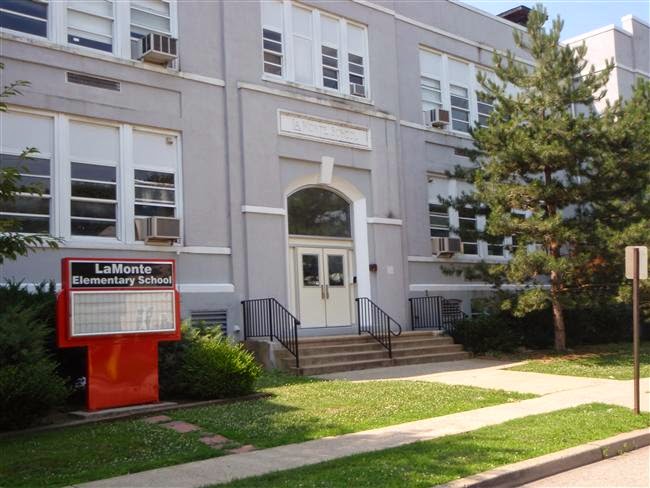 |
| First Watchung Mountain north of Evergreen Avenue |
The little road between St. Johns Place and Thompson Avenue was named for the Evergreens, the LaMonte family mansion that once lorded over High Street on a rise of land at the southeastern end of the avenue. One might assume that the name, like that of many other West End streets, was imported from the Virginia estates of Bound Brook's former first family. In this case one would be wrong.
"The tract of land in which is the borough of Bound Brook was purchased from the Indians in May, 1681.... Thomas Codrington, one of the original purchasers, received as his share of the land 877 acres, lying between the Middle brook and what is now Vosseller avenue, fronting on the Raritan River and running back to the Blue hills. Here he built a house in 1683, which was the first dwelling house in Bound Brook and in Somerset County. The present residency of the Hon. George LaMonte is on the exact site of the original house of Codrington.... The house was built on a slight elevation of ground, sloping on all sides, which tradition says was an Indian mound where the Raritan tribe buried their dead.... In the spring of 1854 Daniel Talmage took down the entire buliding erected by Codrington...and built an entirely new house adjoining on the south. The present name of this old homestead, "The Evergreens," was given by Daniel Talmage who also set out the beautiful arbor vitae hedge." (from Davis TE,
First Houses of Bound Brook, Washington Campground Association 1893)
 |
| The Evergreens, the original LaMonte family home in Bound Brook, New Jersey |
But don't go looking for the Evergreens today. Caroline LaMonte donated the rambling mansion to the Episcopal Diocese of New Jersey in 1922, specifying that it be used to house aging citizens. Thus it became known as Old Ladies Hill until razed in the 1990s for the townhouses of Gilly's Landing.
.jpg) |
| Gilly's Landing at the former site of the Evergreens |


.jpg)






